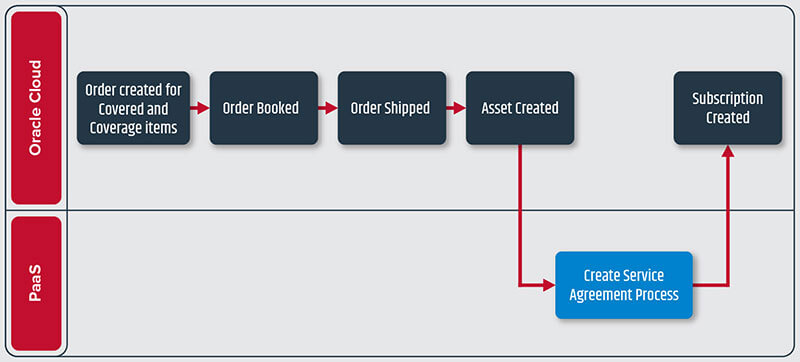Automation of Service Contract Creation in Oracle Cloud Subscription Management
Over last few decades countries have shifted from manufacturing to service based economies. More and more companies are realizing that service revenue is an integral part of the bottom line. Manufacturers are selling after sales services to increase their profitability. With the rise of internet and competition companies are selling ever more complex mixture of products and services. To that end, built on modern Oracle Cloud based technology and machine learning, Oracle Cloud Subscription management provides the required platform to manage a wide variety of service contracts that increase service revenue and profits.
What is a service contract? It is a written contract in which a consumer purchases service coverage from an obligor (manufacturer or third party company). The latter promises to provide service on the covered item in case it breaks down. The term of the coverage varies based on the contract and usually spans from months to years. During this period if equipment breaks down the obligor performs repair or provides replacement. A Service Contract is sometimes referred to as Extended Warranty.
Users have the ability capture service contracts using the Subscription Management application. The simplified modern UI design enables them to add customer, products, services, assets, and entitlement information quickly. However, the contract creation needs to happen manually. There is no standard Oracle out of the box process available that would create a contract after a product is shipped to a customer.
Current Manual Process
The process begins with an order being placed for a product and service coverage. For example, a customer can buy a mobile device and along with it a two-year protection plan. The mobile device is the covered item and the protection plan the coverage. The order is captured and booked in the Oracle Cloud Order Management application. The product gets manufactured, picked, and shipped out to customer. The system creates an asset record and links it to the customer record. The next step in the process is creating a Service Contract. The Contract Administrator runs reports periodically to identify eligible orders and manually creates contracts. This slows down the process and customer service gets adversely impacted by an absence of the right information at the right time.
Challenges
- Additional time and effort required for Contract Creation
- Prone to human errors
- Service disruptions due to lack of contract and entitlement information
Solution

We developed a custom process by using the Oracle PaaS solution to automate the contract creation. After an order is fulfilled, the custom process runs in the background, scans through the order and shipment information, and creates contracts by calling Oracle REST (Representational State Transfer) APIs. The contract header is created using customer information from SO. The coverage product specified in the Order is added as subscription line. The asset/serial number shipped as part of the order is added as the covered level to the line. The system also adds default entitlements to the contract. The Subscription thus created has all the necessary information without requiring any human intervention. It eliminates the need of extra reporting and improves data accuracy. It is created in draft status which enables users to make review/edits as required. The final part for the user(s) is to activate and send the contract document to customer.
The process was further streamlined through the creation of custom OTBI (Oracle Transactional Business Intelligence) reports and dashboards which use the pre-built subject areas that provide real time information to transactional data. They were placed right within the Subscription work area so that users have a quick access and can drill down to details for further analysis.
The solution works for both bundle ordering, in which coverage and covered items are sold together, and for cases when covered item is sold first and coverage sold on a later date.
Process Improvement
- Reduced time in authoring contract
- Easier tracking of information
- Reduced likelihood of error
- Reallocation of resources to more value adding tasks
Conclusion
It is critical to manage service contracts effectively to meet revenue targets. Automating the capture of the contract not only saves time but also maintains accuracy of data – customers, assets, locations, entitlements etc. which is not only key to superior customer service but also prevents revenue leakage.
To learn more about how Apps Associates can help you with your Oracle applications go to www.appsassociates.com.
